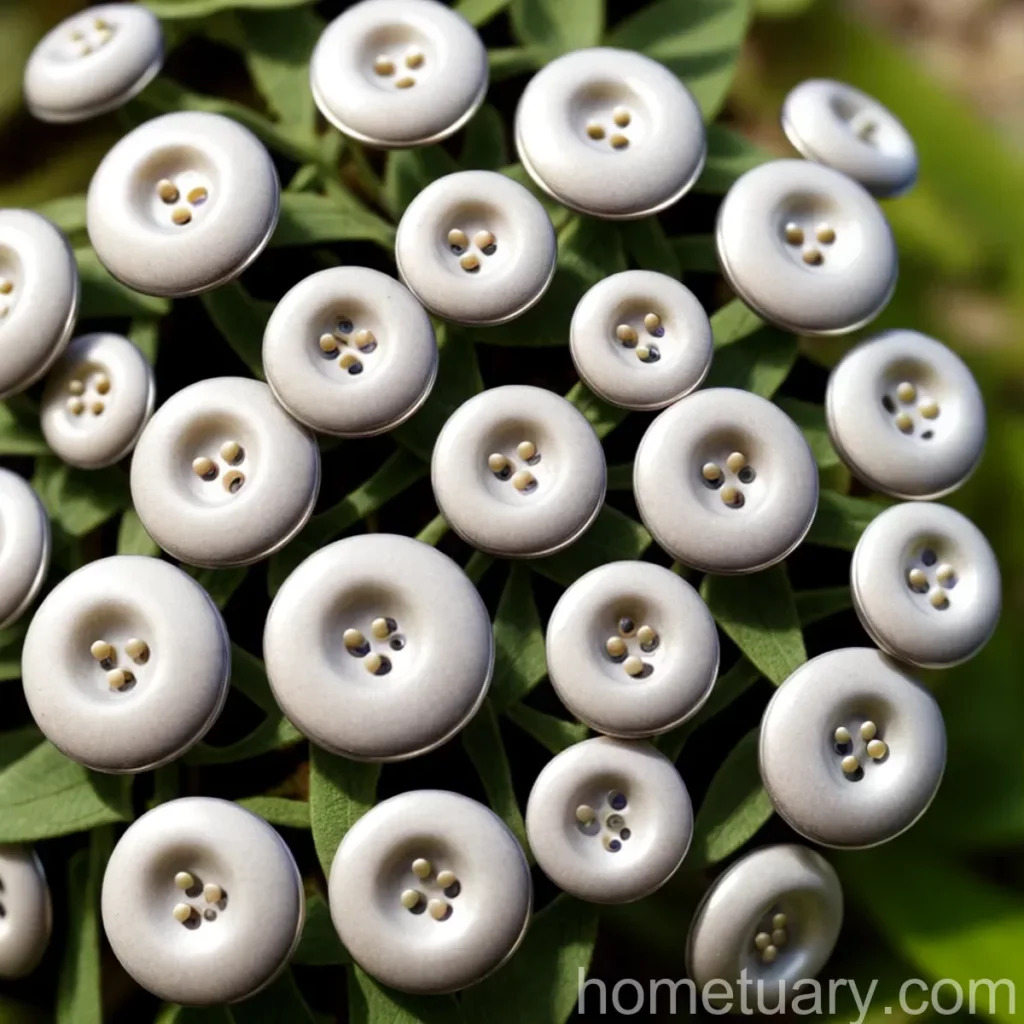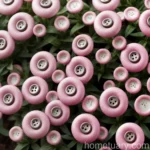Barbara’s Buttons (Marshallia caespitosa): A Complete Guide to Growing and Caring for this Native Plant
Barbara’s buttons, scientifically known as Marshallia caespitosa, is a delightful native plant that graces gardens with its charming appearance and low-maintenance nature. This article aims to delve into the world of Barbara’s buttons and provide comprehensive insights into its cultivation, care, and various aspects related to its presence in the garden landscape.
What is Barbara’s Buttons (Marshallia caespitosa)?
Barbara’s buttons, also known as Barbara’s buttons, Barbara’s-buttons, or white Barbara’s-buttons, is a herbaceous perennial belonging to the sunflower family, Asteraceae. This native North American plant is commonly found in the Southeastern United States, particularly in states like Florida, Georgia, and Alabama. It is known for its unique, button-like clusters of small, white flowers that bloom atop sturdy stems, creating an enchanting display in gardens and natural landscapes.
The plant’s distinguishing feature is its attractive basal rosette of lance-shaped leaves, which adds a touch of elegance to its overall appearance. As a member of the sunflower family, Barbara’s buttons belongs to a diverse and ecologically important group of plants that contribute to the biodiversity and aesthetics of the natural environment.
Key Takeaways – Barbara’s Buttons (Marshallia caespitosa)
Before delving into the specifics of cultivating and caring for Barbara’s buttons, here are the key takeaways about this delightful native plant:
- Botanical Name: Marshallia caespitosa
- Common Names: Barbara’s buttons, white Barbara’s-buttons
- Plant Type: Herbaceous perennial
- Native Range: Southeastern United States
- Flower Characteristics: Button-like clusters of small, white flowers
- Leaves: Basal rosette of lance-shaped leaves
- Cultural Requirements: Partial to full sun, well-drained soil
- Growth Habit: Compact, clumping growth habit
Now, let’s explore the various aspects of cultivating and caring for Barbara’s buttons, encompassing its culture, uses, water requirements, sunlight needs, fertilizer application, soil preferences, pruning, propagation, container gardening, common diseases, pests, and interesting botanist’s tips.
Culture
Cultivating Barbara’s buttons (Marshallia caespitosa) involves understanding and catering to its specific cultural requirements to ensure optimal growth and development. Let’s explore the various cultural aspects associated with this native plant.
Uses
Barbara’s buttons, with its delicate white flowers and distinctive foliage, serves multiple purposes in garden and landscape settings. It can be utilized in various ways, including:
- Ornamental Planting: Barbara’s buttons makes for an excellent ornamental addition to perennial borders, rock gardens, and naturalized areas, contributing a touch of elegance and charm.
- Wildlife Gardens: Its nectar-rich flowers attract pollinators such as bees and butterflies, making it a valuable addition to wildlife-friendly gardens.
- Cut Flowers: The dainty blooms of Barbara’s buttons can be cut for floral arrangements, adding a touch of natural beauty to indoor spaces.
Water
Establishing an appropriate watering schedule is crucial for ensuring the health and vigor of Barbara’s buttons. While this native plant exhibits some degree of drought tolerance once established, it thrives when provided with consistent moisture, especially during the active growing season. Consider the following aspects of watering Barbara’s buttons:
- Watering Schedule: Water the plants regularly, particularly during periods of limited rainfall or prolonged dry spells. Aim to keep the soil consistently moist but not waterlogged, as excessively wet conditions can lead to issues such as root rot.
- Deep Watering: When watering, ensure that the moisture reaches the root zone by watering thoroughly to encourage deep root establishment and resilience against drought conditions.
Sunlight
Barbara’s buttons appreciates ample sunlight to fuel its growth and promote prolific flowering. Understanding its sunlight requirements is essential for situating and caring for this native plant effectively.
- Sun Exposure: Provide Barbara’s buttons with partial to full sun exposure, ensuring it receives at least 6 hours of direct sunlight daily for optimal growth and flowering.
- Morning Sun: In hot climates, providing morning sun and some afternoon shade can help prevent potential stress from excessive heat and sunlight.
Fertilizer
Proper fertilization can significantly enhance the growth and blooming performance of Barbara’s buttons, ensuring the plant receives the necessary nutrients for robust development.
- Fertilizer Type: Apply a balanced, slow-release fertilizer formulated for flowering perennials in early spring to provide a steady supply of nutrients throughout the growing season.
- Application Frequency: Apply fertilizer once a year, following the manufacturer’s guidelines regarding the application rate and method.
Soil
Understanding the preferred soil conditions for Barbara’s buttons is key to creating an environment in which it can thrive and flourish.
- Well-Drained Soil: Plant Barbara’s buttons in well-drained soil to prevent waterlogging, which could lead to root rot and other issues.
- Soil Amendments: Amending the planting area with organic matter, such as compost, can improve soil structure and fertility, benefiting the overall health of the plants.
Pruning
Pruning plays a significant role in maintaining the health, appearance, and longevity of Barbara’s buttons. Proper pruning practices can help manage growth, remove spent blooms, and rejuvenate the plant when necessary.
- Deadheading: Regularly remove spent flowers to encourage continuous blooming and prevent the plant from expending energy on seed production.
- Division: Periodically divide mature clumps of Barbara’s buttons to rejuvenate the plant and prevent overcrowding. Divide the plant in early spring or fall for best results.
Propagation
Barbara’s buttons can be propagated through various methods, allowing for the expansion of its presence in the garden or for sharing with other gardening enthusiasts.
- Propagation Methods: Propagate Barbara’s buttons through division, seed sowing, or stem cuttings, depending on the preferred approach and the availability of plant material.
- Division: Divide mature clumps in early spring or fall, ensuring that each division has a healthy portion of roots and shoots for successful establishment.
- Seed Sowing: Collect seeds from mature flowers and sow them in a prepared seedbed or containers, following proper guidelines for seed starting and germination.
Container Gardening
Barbara’s buttons can thrive and lend its natural charm to container gardens, offering versatility in its application and appeal for gardening in limited spaces.
- Container Selection: Choose a well-draining container of appropriate size to accommodate the plant’s root system while allowing for sufficient moisture retention and aeration.
- Growing Medium: Use a quality potting mix formulated for perennial plants to provide essential nutrients and a conducive environment for Barbara’s buttons to thrive.
Popularity
Barbara’s buttons, with its elegant appearance and suitability for various garden settings, has gained popularity among gardeners and landscape enthusiasts. Its charming and unassuming nature makes it an attractive choice for those seeking to enhance their outdoor spaces with native flora.
Common Diseases
While Barbara’s buttons is generally resilient, it is susceptible to certain diseases that can affect its overall health and appearance. Understanding these potential issues is crucial for implementing preventive measures and addressing any problems promptly.
- Powdery Mildew: Keep an eye out for signs of powdery mildew, a fungal disease that can affect the foliage of Barbara’s buttons. Provide adequate air circulation and avoid overhead watering to discourage the development of this common fungal issue.
Disease Diagnosis
Diagnosing and addressing potential diseases affecting Barbara’s buttons requires keen observation and prompt intervention to mitigate any adverse effects on the plant.
- Symptoms: Look for signs of discolored or distorted foliage, powdery growth on the leaves, or other abnormal changes that may indicate the presence of a disease or pest issue.
- Treatment: Utilize appropriate fungicides or treatments as recommended for the specific disease affecting the plant, addressing the issue promptly to prevent its spread.
Common Pests
Barbara’s buttons may encounter various pests that can impact its growth and vigor. Understanding these potential threats is essential for implementing pest management strategies effectively.
- Aphids: Keep an eye out for aphids, small insects that may congregate on the tender new growth of Barbara’s buttons. Use insecticidal soaps or horticultural oils to control aphid populations without harming beneficial insects.
- Spider Mites: Monitor for signs of spider mite infestations, such as webbing on the plant and stippled, discolored leaves. Utilize miticides or gentle washing to manage these potentially damaging pests.
Botanist’s Tips
Glean valuable insights from botanists and horticultural experts to enhance your approach to growing and caring for Barbara’s buttons.
- Native Plant Appreciation: Embrace the ecological significance and beauty of native plants like Barbara’s buttons, recognizing their role in supporting local biodiversity and preserving native plant habitats.
- Companion Planting: Explore companion planting options that complement Barbara’s buttons, promoting beneficial relationships between plants and enhancing the overall garden environment.
Fun Facts
Delight in the fascinating and noteworthy aspects of Barbara’s buttons, shedding light on the unique attributes and contributions of this captivating native plant.
- Attractive to Pollinators: Barbara’s buttons’ nectar-rich flowers attract an array of pollinators, including bees and butterflies, contributing to the vitality and diversity of the garden ecosystem.
Links to External Resources
To further deepen your knowledge and appreciation for Barbara’s buttons, explore the following external resources:















